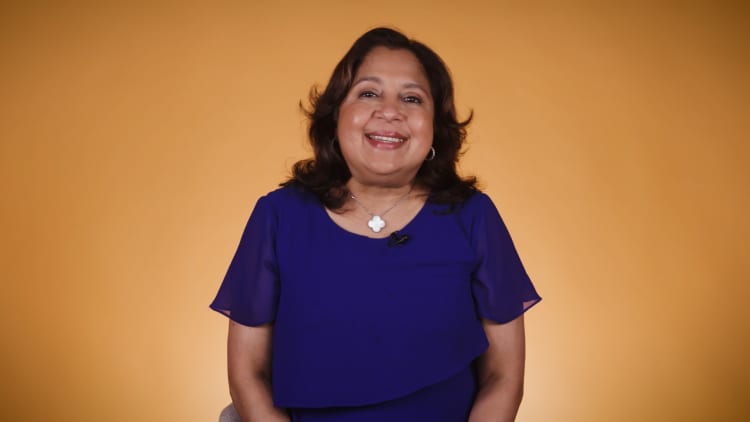As a nutritionist, I know how hard it can be to stay properly hydrated.
But water makes up more than half of our body weight. It keeps us functioning by regulating temperature, lubricating joints, and removing waste from the body.
A lack of hydration can cause heat intolerances, dizziness and periods of fatigue. So if you're constantly feeling sluggish and tired despite getting a quality night's sleep, you may need to boost your water intake.
How much water should you really be drinking a day?
You've probably heard the general rule of eight glasses a day for peak health, but that's not necessarily true.
The National Academy of Medicine recommends an adequate intake of daily fluids of about 13 cups and 9 cups for healthy men and women, respectively (with 1 cup equaling 8 ounces).
However, it may vary depending on several factors, such as age, sex and lifestyle. If you exercise often and live in a hot climate area, for example, you may need more fluid intake.
It's also possible to take in too much water if you have certain health conditions, such as thyroid disease or kidney, liver or heart problems, according to Dr. Howard LeWine, an internist and Chief Medical Editor at Harvard Health Publishing.
And research shows that certain medications, such as non-steroidal anti-inflammatory drugs (NSAIDs) and some antidepressants, make you retain water.
It's helpful to speak to a medical professional for more specific guidance.
How to stay hydrated beyond plain water
Plain water isn't the only way to meet your hydration needs, especially if you want to switch things up throughout the day.
1. Low-sodium broths and soups
A little bit of sodium is okay. It can actually help with hydration by balancing fluids in our cells, but too much can worsen your hydration status.
I love low-sodium vegetable, lentil and chicken noodle soups. They're packed with proteins that help keep you full, without all the heavy creams you typically find in chowders or bisques.
2. Water-rich fruits
Made up of nearly 92% water, watermelon is one of the fruits with the highest water content.
But there are plenty of other water-rich fruits to choose from, including cantaloupes, strawberries, oranges, apples, pineapples and grapes.
3. Hydrating veggies
Some vegetables contain 80% to 99% water, such as celery, cucumbers, cabbage, carrots and broccoli.
Swapping out salty chips for crispy vegetables will help you still get the crunch you crave, but with fewer calories and more nutrients.
4. Refreshing fruit desserts
Many frozen dessert options provide hydration with fewer calories, like Italian ice, sorbet, snow cones and ice pops.
They can still be high in sugar, which may actually make you feel more thirsty (and can potentially increase your blood sugar levels), so keep your portions small.
5. Coffee or tea
Coffee and tea are both made with water, but depending on the type you choose, your blend may contain lots of caffeine, which in large amounts is considered a diuretic that can cause dehydration.
The Food and Drug Administration recommends keeping your caffeine intake under 400 milligrams a day, or roughly four to five cups of coffee.
Lauren Armstrong is a dietitian and nutrition coach. She was also a nutritionist for The Women, Infant and Children (WIC) program. Lauren received her bachelor's degree in dietetics from Western Michigan University and has written for several publications, including Livestrong and HealthDay.
Don't miss:
- Longevity doctor shares the No. 1 diet he follows to 'beat diseases and live longer': It's a 'unique blend' of foods
- I'm a nutritionist from Japan, home to the world's longest-living people—here are 5 American foods I never eat
- An 81-year-old brain doctor's 7 'hard rules' for keeping your memory 'sharp as a whip'
Want to be smarter and more successful with your money, work & life? Sign up for our new newsletter here

Get CNBC's free Warren Buffett Guide to Investing, which distills the billionaire's No. 1 best piece of advice for regular investors, do's and don'ts, and three key investing principles into a clear and simple guidebook.


